SEO Basics For Beginners – 13 Easy Rules For On-Page SEO
Author: Pouya Eti
13 Rules of SEO basics for beginners to improve the on-page SEO of your website.
First Step Of SEO Basics For Beginners
We will learn and practice SEO basics mostly on WordPress, but the rules we follow are working on all other platforms like Wix, Squarespace, and even web pages coded with simple HTML. All you need to do is search for ‘SEO for’ + ‘The platform you used to create your website.’
In our case, which is WordPress, we will use a powerful plugin named Rankmath. In chapter 4 of this training we will go very deep and learn everything about this plugin but for now, just go to:
The Plugins tab in your WordPress dashboard > Add new > search for Rank math
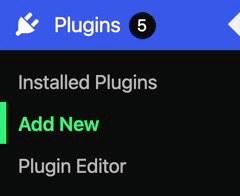

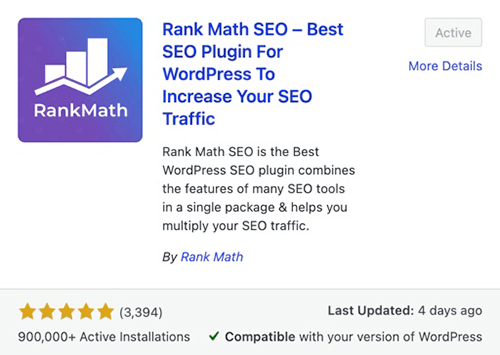
On-Page SEO
After installing and activating the plugin, it is time to edit and optimize your web pages for SEO.
When you open the edit page of any web page, if you scroll down, you will see a new setting added to the page about SEO. The SEO setting looks like the image shown below:
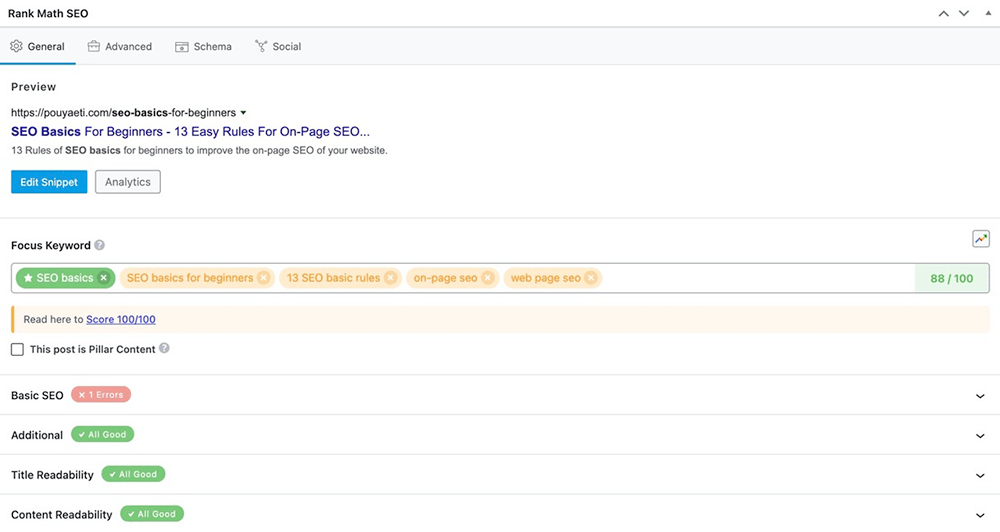
Of course, normally the Rank Math setting has no focus keyword and you must add them, but we will get back to it later on this page.
So let’s get started with the 13 SEO basic rules for beginners.
1. Focus Keyword
The very first step is to do keyword research and select the best possible choice for your page. There are many different tools that will help you to find the right keyword for your web page SEO such as:
You can use any of these tools to analyze the keywords you have in your mind or get some suggestions. But the important thing is search volume and competition.
Especially if your website doesn’t have high traffic, you must go after keywords with low competition and high volume.
How to use Keyword Planner to do keyword research:
Keyword planner is a free tool, but you must create a Google ads account to get access. When setting up your account for the first time, Google may ask you to create an advertisement and add your billing information.
It’s alright, create an ad, add the billing information, and go ahead and pause or cancel the ad right after you made it. This way, you get access to Google ads and all its tools without any payment.
The next step to do keyword research using Keyword Planner is to:
- Click on the “Tools & Settings”
- Select “Keyword Planner”
- Select “Discover New Keywords”
- Select the right language, location and write the keyword(s) you have in mind
- Click on “Get Results”
You can see the steps in the pictures below as well.


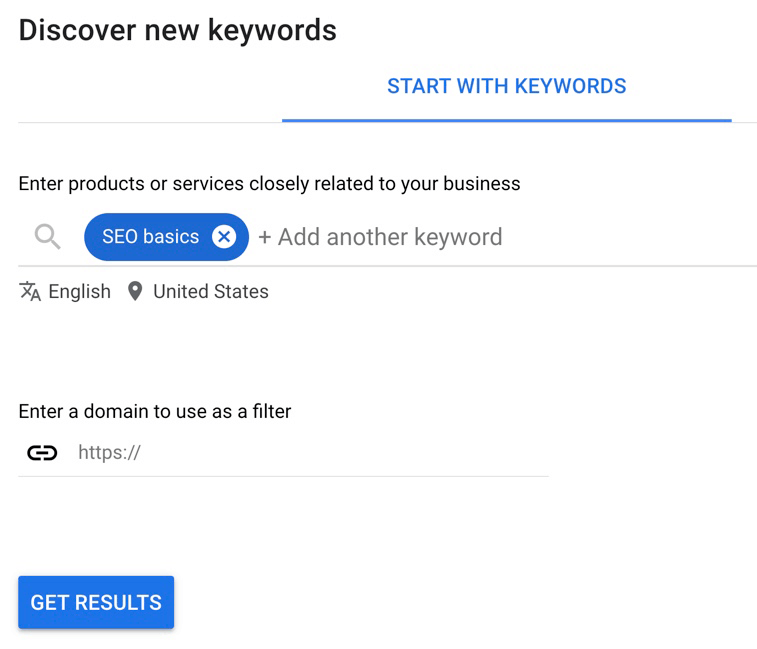
You will see a list of keyword suggestions with the amount of traffic and how competitive they are on the next page.
As you can see in the image below, the first column is the keyword ideas, and The second column is the average monthly search for each of those keywords. Finally, the third column is the competition (keyword difficulty).
As we mentioned before, you must find keywords connected to your main topic with high monthly searches and low competition.
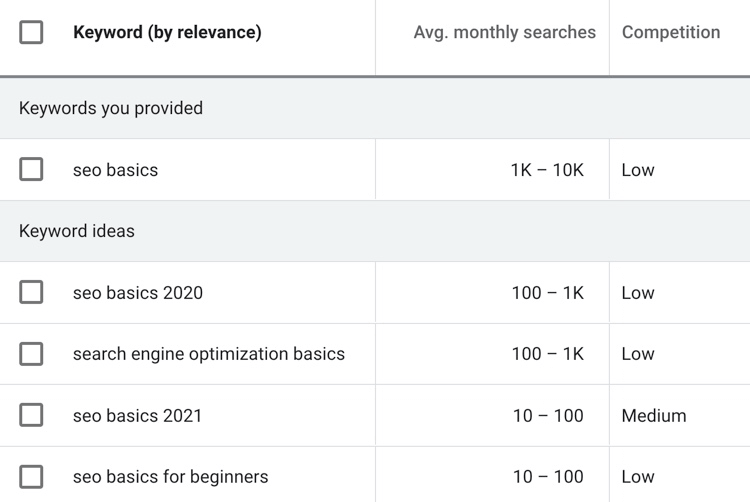
There is another great tool for keyword research and many other tasks connected to SEO, but this one is paid.
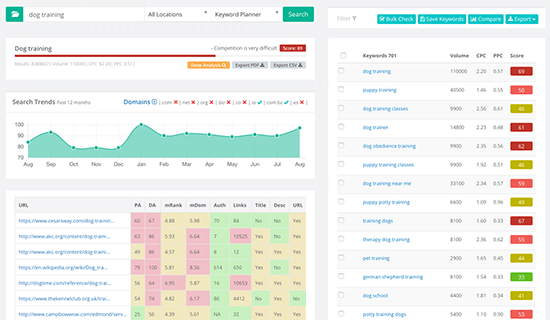
Now all you have to do is to:
- Select one focused keyword
- Select several good side keywords where you have a potential to rank in
The final step for the keyword is to go back to the Rank Math setting in your page and first write the focus keyword and then side keywords as shown in the image below.

2. Page Title & Its Rules
The second rule we must follow is to select the right page title for our page. The place to write the title of a page is right at the top of the page as you can see in the image below:

It may seems easy but there are several steps to follow.
Step 1:
The page title must include the focus keyword.
ex:
- Focus keyword = SEO Basics
- Title = SEO Basics For Beginners – 13 Easy Rules For On-Page SEO
Step 2:
The focus keyword must be in the first 4 words of the title.
Bad example:
13 Easy Rules For On-Page SEO and SEO Basics For Beginners
Good example:
SEO Basics For Beginners – 13 Easy Rules For On-Page SEO
Step 3 – increase readability:
To improve the readability of your page title it is better to use a number and a power word in your title as well.
3. URL or Permalink
The third rule is to use the focus keyword in the URL of the webpage as well, but remember to use small letters and use a dash instead of space. Also, the maximum number of characters is 75.
If our focus keyword is “SEO Basics” then:
Bad example:
/seo-for-beginners/
Good example:
/seo-basics-for-beginners/
4. Meta Description
The next step is to write a meta description for our web page. The main thing you should consider is to use the focus keyword inside the text you write. The place where you should write the meta description is inside the
- Rank Math setting section
- Then click on “Edit Snippet”
- A window will pop up and at the bottom, you will see the description section.
As shown in the image below:
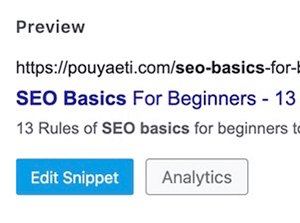
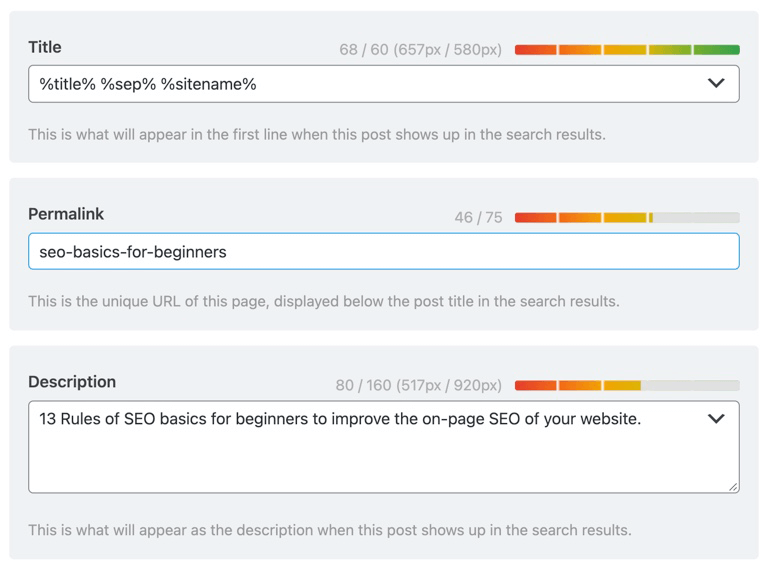
Remember that the maximum number of characters is 160, and what you write should include the focus keyword, which must be interesting and connected to the page’s main goal.
5. Keyword In The 10%
When you are writing the content of your page, you must make sure to use the focus keyword in the first 10% of your content, preferably at the beginning.
I myself try to use it in the first one or two lines of my content.
6. The 600 Words
When you are writing the content of your page, make sure to write at least 600 words or more. If you check some of the top pages in the SERP, you may find that most of them write about 2000 – 4000 words.
This is very important and effective to rank higher on search engines. You can use this trick on the category or product pages of any e-commerce website as well.
By adding several paragraphs to your page content, you can easily rank higher. The amount to rank higher depends on the keyword and the competition you have for that keyword.
7. H2 - H6 Titles
Using the focus or side keywords in titles from H2 – H6 (headline sizes) is vital. Each page must have only and only one H1 and one or more other heading sizes from 2 – 6.
There is a chrome extension that helps you to view the content on each page in a category type which name is “SEO Meta in 1 Click“
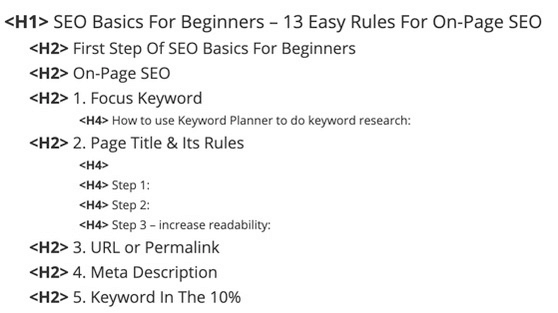
8. Alt Text
A great ranking factor is to add alt text to images. Search engines can understand what your image is about via a text you write which name is alt text.
When you write the alt text, pay attention to using the focus keyword and connected keywords to describe the image.
This way you have a chance to drive organic search traffic from the image search of search engines as well.
9. Keyword density
The keyword density along the whole page is very important. In some cases, it is different, but generally, it is recommended to be more than 1% and less than 2.5%.
Meaning if you write 600 words on a page (counting the headlines as well), you must use the focus keyword or side keywords between 6 to 12 times in total.
10. External Dofollow Link
Link building is an essential part of a successful SEO which we have a complete chapter for it. But at this point, you must know that you should have at least one external link with dofollow setting.
The word below is an external link to the Google website and when we say it is dofollow, it means that search engines can track the traffic from the external link and there will be a credit for it.
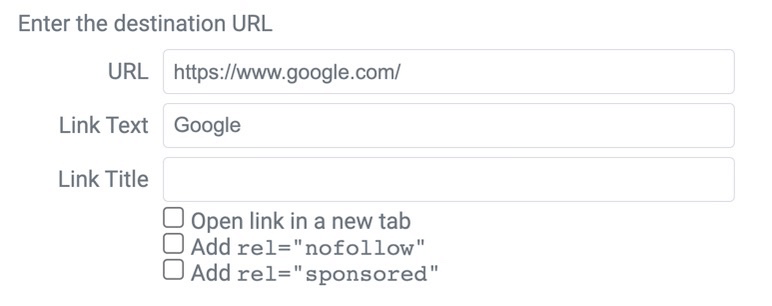
11. Internal Link
The next thing you must consider using is internal links. The best example of using internal links is Wikipedia.
Internal links are the links on your page which drive traffic to the other pages on your own website. Internal links also decrease the bounce rate percentage which also is good for SEO.
12. First time to use focus keyword
Another effective rule is to use each focus keyword on time for a page on your website. Meaning it harms ranking a page if we create 2 pages for one focus keyword.
13. Short Paragraphs
The final rule you should consider is to keep paragraphs short, usually less than 100 words. It positively affects search engine optimization, driving organic traffic, and makes the process easier for readers to continue.
Usually, most people are not interested in reading long paragraphs and lose interest.
In the upcoming section, we will talk more about advanced stuff regarding SEO such as SEO link building, in-depth on-page SEO, Google search console, and more.